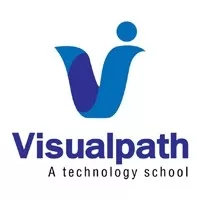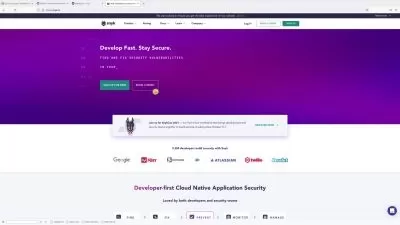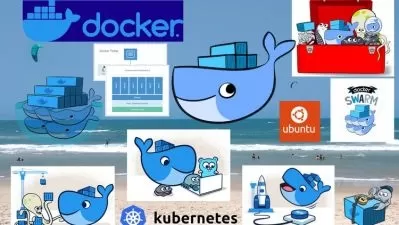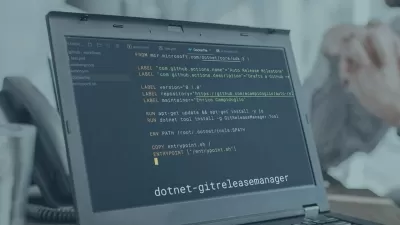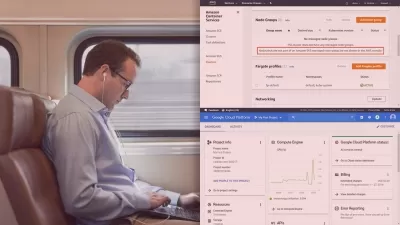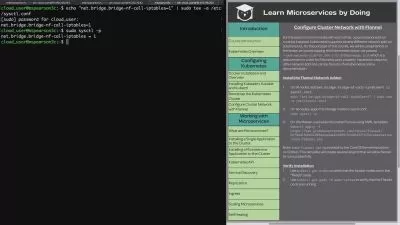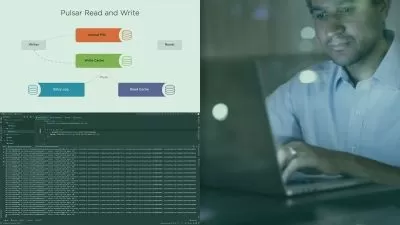Docker & Kubernetes for Beginners
Visualpath .
52:05:48
Description
To learn Containerization tools like Docker Engine, Docker Compose, and Kubernetes tools from basics for beginners
What You'll Learn?
- In modern application deployment for SDLC process container plays a key role to deliver the product much faster and efficient manner
- This beginners trainer program helps to understand the core functionalities of the Containerization technology
- We have many operations in different roles like Administration, DevOps, DevSecOps, Developers who needs to learn Containerization tools to run their application
- You will be learning strong basics of Docker Engine, Docker Compose, and Kubernetes Orchestration tools
Who is this for?
What You Need to Know?
More details
DescriptionBeing a part of SDLCÂ process, is not easy to manage, Because of DevOps culture and other source have been adopted by many of the Organizations in today ITÂ industry.
We need to sustain in the IT domain by adopting those technology as a Developer, Administrator, DevOps, DevSecOps or SRE role.
In this course we are providing the hands-on labs and theoretical knowledge to understand how containers works with different tools like Docker Engine, Docker Compose and Kubernetes Orchestration to run different sort of applications like Webservers, databases, CICD, etc.,
1) Docker Engine: Architecture, Setup and Configuration, Containers, Images (Predefined and Custom), Storage, Network, etc.,
2) Docker Compose: Orchestration, YAML, resource management.
3) Kubernetes Orchestration: Architecture, Cluster Setup, Workloads, Configurations, Storage, Networking, Ingress Controller, etc.,
Though you are coming from different background like ITÂ or non-IT domain, we need to understand containerization technology where this course helps you to understand from scratch.
After completion of this training program, you can even plan for basic level certification from Kubernetes like CKAÂ (Certified Kubernetes Administrator).
This course will be a beginning step to learn containerization technology and from here you can handle any sort of application deployment or management as per Organization requirement.
Who this course is for:
- Developers, SDET, DevOps, DevSecOps, Administrators
Being a part of SDLCÂ process, is not easy to manage, Because of DevOps culture and other source have been adopted by many of the Organizations in today ITÂ industry.
We need to sustain in the IT domain by adopting those technology as a Developer, Administrator, DevOps, DevSecOps or SRE role.
In this course we are providing the hands-on labs and theoretical knowledge to understand how containers works with different tools like Docker Engine, Docker Compose and Kubernetes Orchestration to run different sort of applications like Webservers, databases, CICD, etc.,
1) Docker Engine: Architecture, Setup and Configuration, Containers, Images (Predefined and Custom), Storage, Network, etc.,
2) Docker Compose: Orchestration, YAML, resource management.
3) Kubernetes Orchestration: Architecture, Cluster Setup, Workloads, Configurations, Storage, Networking, Ingress Controller, etc.,
Though you are coming from different background like ITÂ or non-IT domain, we need to understand containerization technology where this course helps you to understand from scratch.
After completion of this training program, you can even plan for basic level certification from Kubernetes like CKAÂ (Certified Kubernetes Administrator).
This course will be a beginning step to learn containerization technology and from here you can handle any sort of application deployment or management as per Organization requirement.
Who this course is for:
- Developers, SDET, DevOps, DevSecOps, Administrators
User Reviews
Rating
Visualpath .
Instructor's Courses
Udemy
View courses Udemy- language english
- Training sessions 260
- duration 52:05:48
- Release Date 2024/01/03





